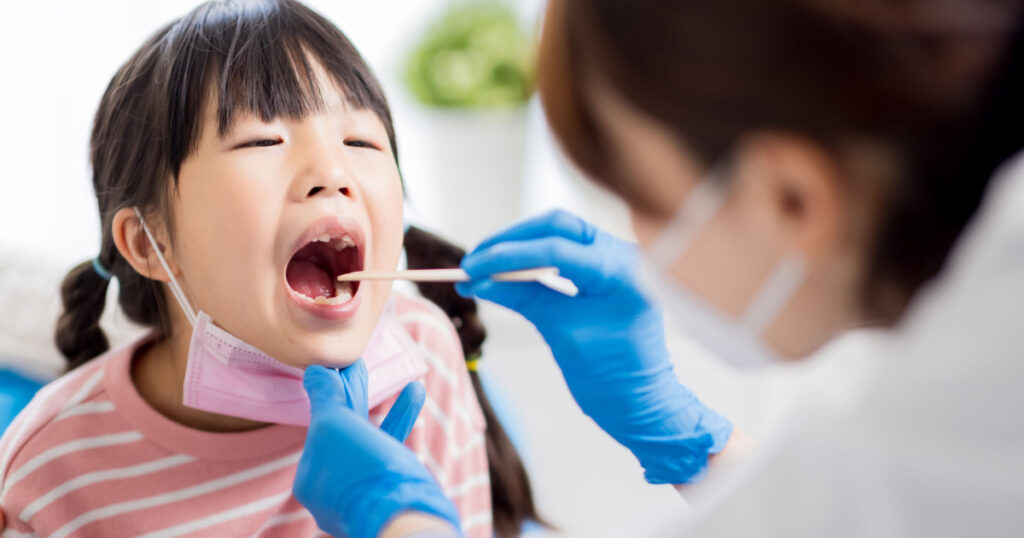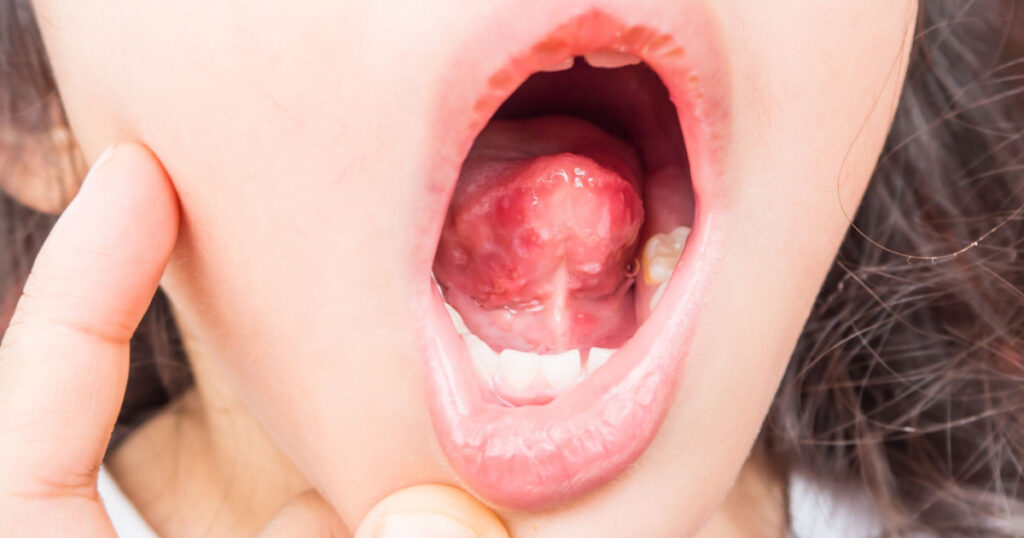If you are a parent, then chances are you’ve heard of hand-foot-and-mouth disease. This is a viral, contagious infection that is common among children. What exactly is it, though? Is it avoidable? What signs should you watch out for? If your child does contract it, what should you do about it? Let’s get to the bottom of these questions.
What is Hand-Foot-and-Mouth Disease?

Hand-foot-and-mouth disease (HFMD) is a common viral illness that typically affects infants and children under the age of 5. It is caused by the coxsackievirus, and less commonly, by the enterovirus. The illness gets its name from the characteristic symptoms it presents, which include sores or blisters on the hands, feet, and mouth. (1, 2)
How Does Hand-Foot-and-Mouth Disease Spread?

HFMD is highly contagious and can spread easily from person to person. The virus is primarily transmitted through close contact with an infected person’s bodily fluids, such as saliva, mucus, and blister fluid. It can also be contracted by coming into contact with contaminated surfaces or objects, such as toys, utensils, and doorknobs.
Read: 20 Symptoms of Lyme Disease You Can’t Afford to Ignore
Warning Signs and Symptoms

There are a number of warning signs and symptoms that you should keep an eye out for. If you notice your child displaying any of these symptoms, they may have contracted HFMD.
1. Fever

One of the initial signs of HFMD is a sudden onset of a high fever, often exceeding 101 degrees Fahrenheit. This fever typically lasts for 2 to 4 days.
2. Sore Throat

HFMD can cause a painful and discomforting sore throat. Swallowing may become difficult, leading to decreased appetite.
3. Feeling Sick

A general feeling of malaise and overall illness may accompany HFMD. Children may seem fatigued, irritable, and less energetic than usual.
4. Blister-like Lesions on the Tongue, Gums, and Inside of the Cheeks

The mouth is a common site for HFMD symptoms. Small, red, blister-like lesions can appear on the tongue, gums, and the inside of the cheeks. They can be red, white, or gray in color. These painful sores can make eating and drinking uncomfortable.
5. A Rash on the Palms, Soles, and Sometimes the Buttocks

HFMD can also cause a distinct rash on the palms of the hands, soles of the feet, and, occasionally, on the buttocks. This rash may start as flat red spots that can develop into small blisters or ulcers.
Read: 9 Signs of Liver Problems
6. Fussiness for Infants and Toddlers

Young children with HFMD often become fussy and more irritable than usual. They may cry excessively and have difficulty sleeping and resting.
7. Loss of Appetite

Due to the discomfort caused by the sore throat and mouth sores, children with HFMD may experience a loss of appetite. They may refuse to eat or drink, leading to potential dehydration.
Prevention and Precautionary Measures

There are things you can do to prevent your child from contracting HFMD. Education, both for yourself and your children, is paramount. From there cleanliness and hygiene lead the way. To prevent HFMD,, encourage proper hygiene practices, such as frequent handwashing with soap and water. You should also teach children to cover their mouth and nose while coughing or sneezing. Remember to clean and disinfect frequently touched surfaces and toys regularly. Lastly, avoid close contact with infected individuals, including sharing utensils, cups, and other personal items. If you suspect your child has HFMD or any other contagious illness, don’t send them to school or daycare. They will only end up infecting other children.
What to Do if You Suspect Your Child Has HFMD

- Consult a healthcare professional: Contact your child’s pediatrician or a healthcare professional to discuss the symptoms and seek appropriate medical advice.
- Practice self-isolation: Keep your child away from other children and public places to prevent the spread of the virus.
- Provide proper care: Make sure your child gets plenty of rest, drinks fluids to prevent dehydration, and eats a diet that is easy on the mouth, such as soft foods and liquids.
- Manage fever and discomfort: Use over-the-counter fever reducers (following proper dosing instructions) to help bring down the fever and alleviate any pain or discomfort.
- Maintain good hygiene: Wash your hands frequently, especially after caring for your child or cleaning up after them. Additionally, regularly clean and disinfect surfaces and objects that may have come into contact with the virus.
In Conclusion

Though HFMD is not overly dangerous, it is uncomfortable and certainly not ideal. Do your best to teach your children proper hygiene in order to avoid it. Remember, always consult a healthcare professional for an accurate diagnosis and appropriate treatment.
Keep Reading: This is the #1 vitamin kids aren’t getting enough of, according to Dietician
Sources
- “Hand-foot-and-mouth disease.” Mayo Clinic
- “Hand, Foot, and Mouth Disease.” Kids Health

